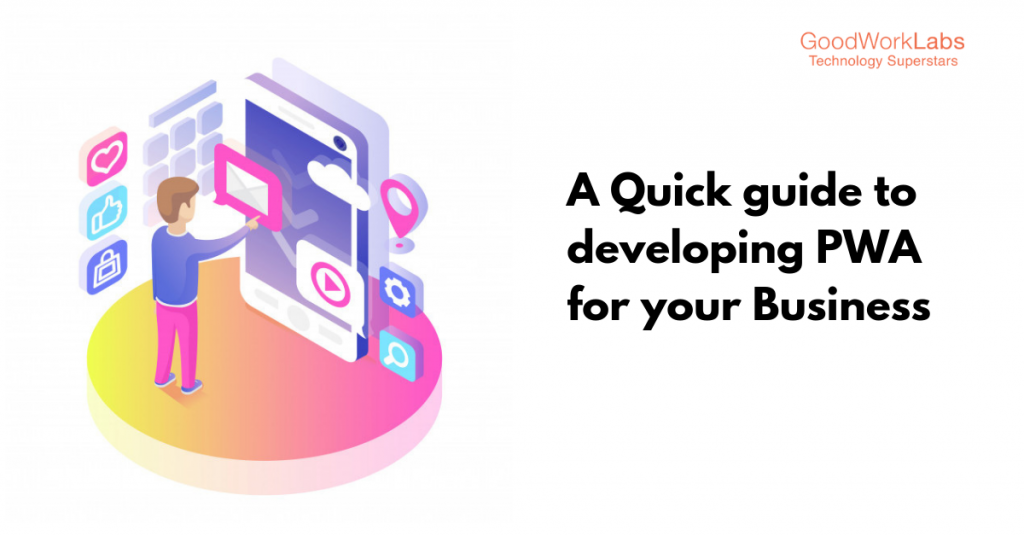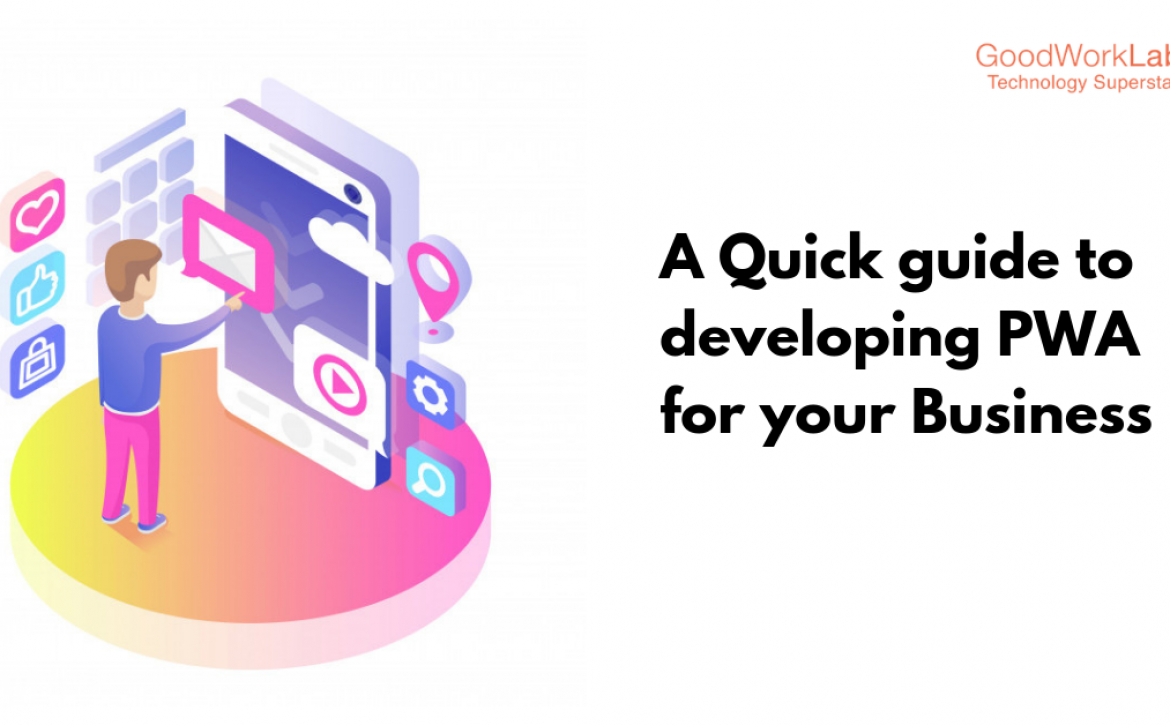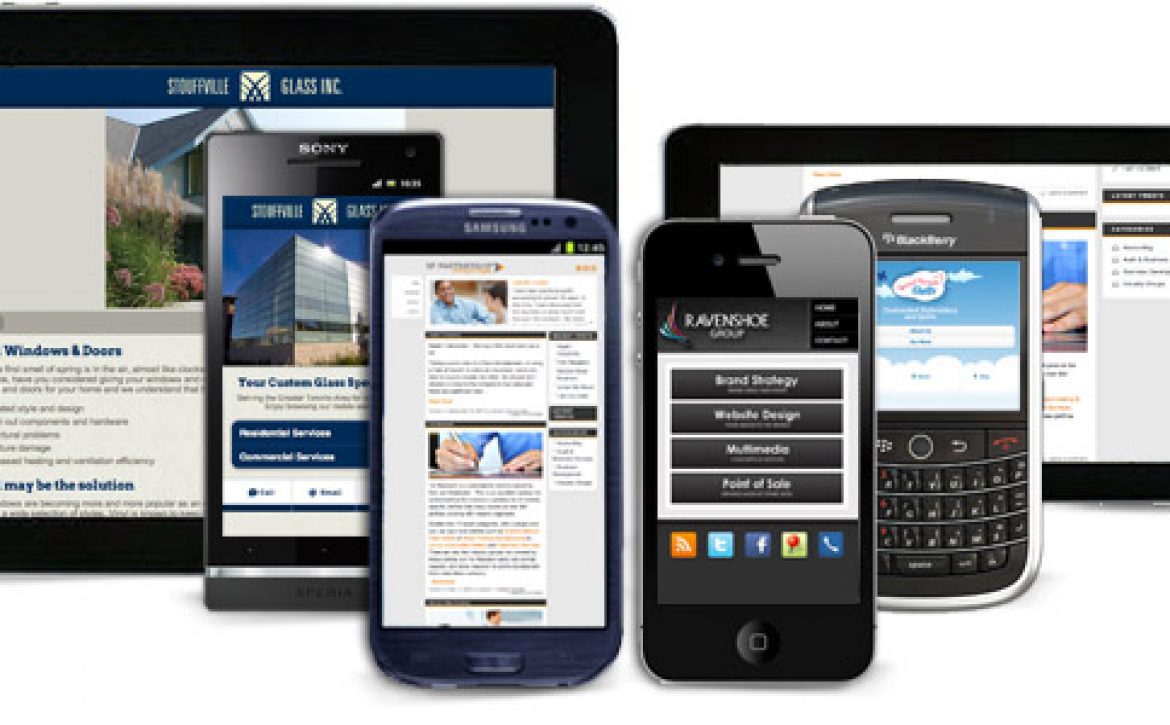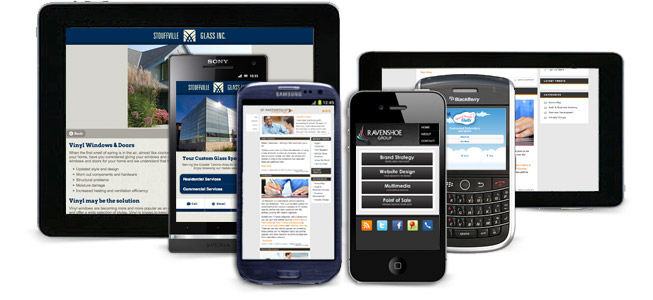A quick guide to launching PWA apps for your business
What are Progressive Web Apps
Progressive web applications (PWAs) can offer user functionalities such as push notifications, working offline, and device hardware access and still load like regular web pages or websites.
PWA apps are reliable, fast and engaging. The app should load regardless of the network condition even if the device is offline or has a slow connection. The app must be fast and give prompt responses to the users. Progressive web applications should provide user experience equivalent to the native apps. For example, PWA can use device capabilities and show custom icons to ensure quick load time.

In simpler terms, PWA is a website with mobile experiences that is more pleasant than the normal mobile-optimized website. It functions almost like a native app with following jotted features
1. Offline support
2. Faster Loading
3. Security
Also, PWAs are not platform-specific and can be built with any framework. They don’t revolve around specific technologies or frameworks.
Let’s go over the core principles of Progressive Web Applications to gather a deeper and better understanding:
1. Reliability or Offline support
Regardless of the network status, PWAs are expected to launch. This can be achieved by using client-side proxies written in JavaScript i.e. Service Workers. PWAs should perform at an optimum level even in slow network conditions. Regardless of bandwidth and latency, the navigation inside the app should be smooth. In such scenarios, service workers help by caching lazy-loaded routes.
2. Performance
This is the most crucial metric for any web application. As reported by Google, if a site takes more than 3 seconds to load, 53% of users abandon it. The probability of users bouncing back increases by 32% if the page load time goes from 1 to 3 seconds. Similarly, if the page load time prolongs from 1-5 seconds, the probability of the bounce increases by 90%.
3. Rail model
For measuring the performance, the performance engineers at Google have developed a universal model called RAIL. By researching human interactions with computer programs a user-centric model RAIL was created. The RAIL model can be applied to all user-oriented software program like websites, desktop applications, mobile applications, and video games.
RAIL is basically an acronym for describing key performance metrics:
Respond, Animate, Idle, and Load.
This means that the response to user input should be in 100 ms, all the animations should run in 60fps, idle time should be maximized, and load time for displaying some content should be under 1 sec and become interactive under 5 secs.
4. Engagement
The essence of PWAs is that it should have the feel and the capabilities of native apps. PWAs can be opened without any browser controls on all major mobile platforms and can be installed on the user’s home screen. On desktop platform, PWAs can be added to docks and taskbar. Also, shortcuts can be added to the desktop.
Benefits of Progressive Web Apps (PWA)
Progressive web apps come with a package deal of some lucrative features.
1) Native apps fall in the size range of 200MB or more, while PWAs are way too light and can range in KBs.
2) Native platform codes are not required
3) The cost of acquisition is very low as it is easy to convince a user to visit a website than to install an app to get a first time experience.
4) Fewer efforts are required to build and release updates
5) Better support for deep links than the app store applications
The PWA battle: Apple vs Google
Did you know? Apple App Store generates 10 times more revenue per device in comparison to the Google Play Store.
Reason: Apple App Store has a strict manual review process and charges $100 per license to upload to the store. Whereas Google has a very relaxed review process which is automated and charges $25 per upload to the store.
Google aggressively promotes PWAs while Apple lags behind in the PWA support. The introduction of ServiceWorkers was very late and even today they don’t support or prompt users to add the app to the home screen. While Apple focuses on their ecosystem, Google focuses on providing services to all devices.
Emerging markets
PWAs have a great emerging market and can make a major impact on the next billion users. Most internet users are traced via smartphones from regions like China, India, Brazil, Indonesia, and Nigeria. These regions hold a vital future for PWAs as they require 10x less data transfer.
The comparison of platform feature
There is no doubt that the web platform has advanced quite a lot in recent times but it still doesn’t provide support for basic capabilities of mobile apps.
On iOS device, push notifications are not supported while on Android push notifications are fully supported. On desktop devices, notifications are only received when they are open.
There is an additional limitation such as USB, NFC, and Bluetooth are only supported on the Chrome browsers. Also, the device authentication is difficult as there is no way to authentic users on the basis of FaceID, TouchID, or Fingerprint on the web.
Final Words
In the light of above facts, obviously, some of the key features are missing in Progressive web apps. Still, the goals set by the progressive web apps can be followed and applied in native apps, especially those apps which are built using web technologies like React Native.
Go here if you would like to build your own progressive web application.





